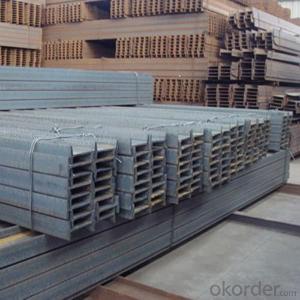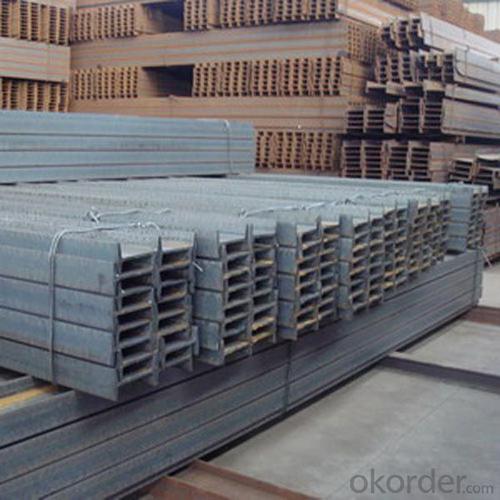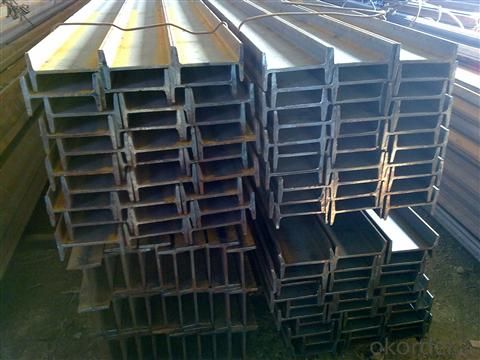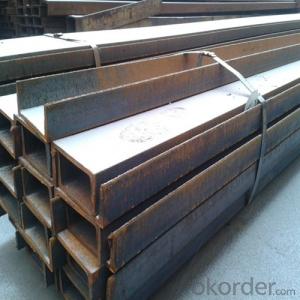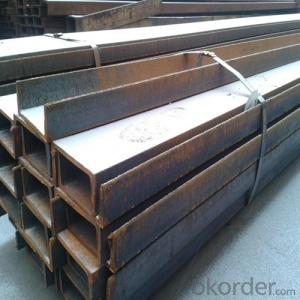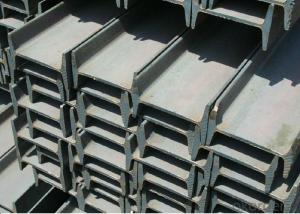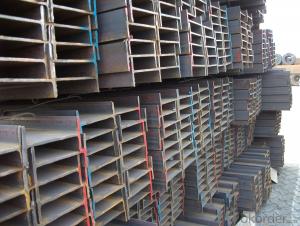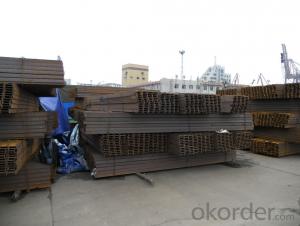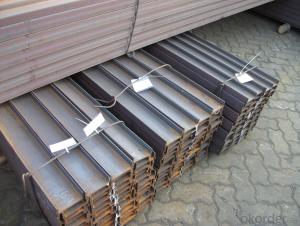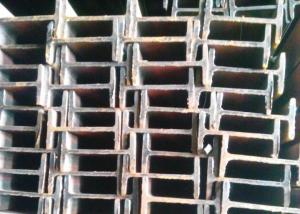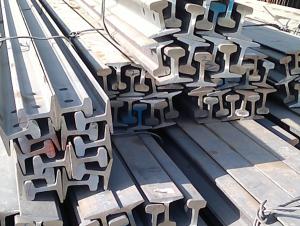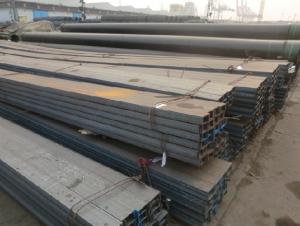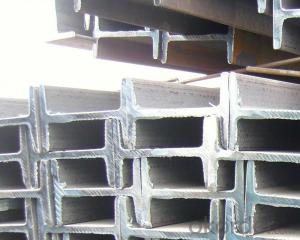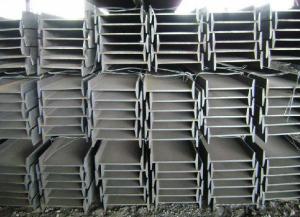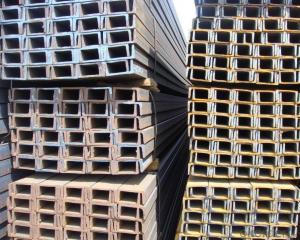80*46mm IPEAA200 ASTM A36 for construction
- Loading Port:
- Tianjin
- Payment Terms:
- TT or LC
- Min Order Qty:
- 25 m.t.
- Supply Capability:
- 100000 m.t./month
OKorder Service Pledge
OKorder Financial Service
You Might Also Like
1. Structure of Steel I Beam IPE Description:
Steel I beam IPE is a beam with an I-shaped cross-section. The horizontal elements of the "I" are known as flanges, while the vertical element is termed the "web". Steel I beam IPE is usually made of structural steel and is used in construction and civil engineering. The Steel I beam IPE resists shear forces, while the flanges resist most of the bending moment experienced by the beam. Steel I beam IPE theory shows that the I-shaped section is a very efficient form for carrying both bending and shears loads in the plane of the web.
2. Main Features of Steel I Beam IPE:
• Grade: Q235
• Type: Mild carbon steel
• Deflection: The stiffness of the I-beam will be chosen to minimize deformation
• Vibration: The stiffness and mass are chosen to prevent unacceptable vibrations, particularly in settings sensitive to vibrations, such as offices and libraries.
• Local yield: Caused by concentrated loads, such as at the beam's point of support.
1. Structure of Steel I Beam IPE Description:
Steel I beam IPE is a beam with an I-shaped cross-section. The horizontal elements of the "I" are known as flanges, while the vertical element is termed the "web". Steel I beam IPE is usually made of structural steel and is used in construction and civil engineering. The Steel I beam IPE resists shear forces, while the flanges resist most of the bending moment experienced by the beam. Steel I beam IPE theory shows that the I-shaped section is a very efficient form for carrying both bending and shears loads in the plane of the web.
2. Main Features of Steel I Beam IPE:
• Grade: Q235
• Type: Mild carbon steel
• Deflection: The stiffness of the I-beam will be chosen to minimize deformation
• Vibration: The stiffness and mass are chosen to prevent unacceptable vibrations, particularly in settings sensitive to vibrations, such as offices and libraries.
• Local yield: Caused by concentrated loads, such as at the beam's point of support.
Package & Delivery of IPE Beam
1. Packing: it is nude packed in bundles by steel wire rod
2. Bundle weight: not more than 3.5MT for bulk vessel; less than 3 MT for container load
3. Marks: Color marking: There will be color marking on both end of the bundle for the cargo delivered by bulk vessel. That makes it easily to distinguish at the destination port.
4. Tag mark: there will be tag mark tied up on the bundles. The information usually including supplier logo and name, product name, made in China, shipping marks and other information request by the customer.
If loading by container the marking is not needed, but we will prepare it as customer request.
5. Transportation: the goods are delivered by truck from mill to loading port, the maximum quantity can be loaded is around 40MTs by each truck. If the order quantity cannot reach the full truck loaded, the transportation cost per ton will be little higher than full load.
6. Delivery of IPE Beam: 30 days after getting L/C Original at sight or T/T in advance
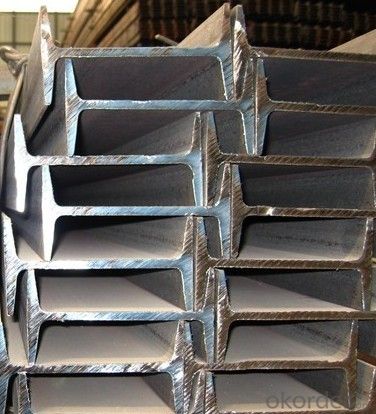
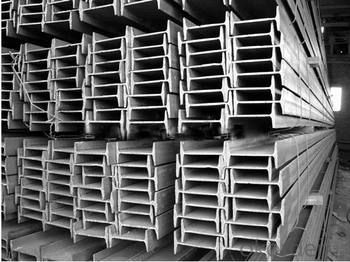
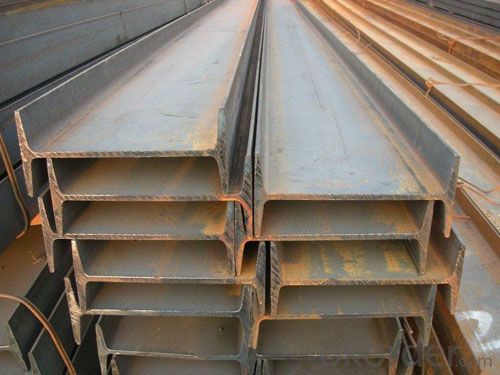
- Q: How do steel I-beams resist deflection?
- The structural design and material properties of steel I-beams enable them to resist deflection. The wide flanges and narrow web of an I-beam create a shape with a high moment of inertia, which prevents bending. This shape allows for the even distribution of loads across the cross-section of the beam, minimizing deflection. The flanges, positioned at the top and bottom of the beam, are where most of the bending stresses occur, while the web connects them, ensuring stability and resistance against twisting or buckling. Furthermore, steel possesses excellent strength and stiffness characteristics as a material. It has a high elastic modulus, indicating its ability to endure significant stress before permanent deformation. This quality enables I-beams to withstand heavy loads without deflecting. Additionally, steel exhibits a high yield strength, which is the point at which it begins to deform plastically. This feature allows I-beams to handle even greater loads before experiencing failure. To further enhance deflection resistance, I-beams can incorporate additional reinforcements like stiffeners or bracing. These reinforcements provide extra support and rigidity, effectively reducing deflection by increasing the overall stiffness of the beam. In conclusion, steel I-beams resist deflection due to their shape, which includes a high moment of inertia and even load distribution, as well as the inherent strength and stiffness properties of steel. By combining these factors, I-beams are capable of withstanding heavy loads while maintaining minimal deflection.
- Q: What are the different types of steel reinforcements used in I-beams?
- The different types of steel reinforcements used in I-beams include plain carbon steel, high-strength low-alloy (HSLA) steel, stainless steel, and galvanized steel. These reinforcements are chosen based on the specific requirements of the I-beam, such as strength, corrosion resistance, and cost-effectiveness.
- Q: How heavy is the steel rope for lifting I-beam?
- Lifting the I-beam, the steel rope is calculated according to the weight of the hoisting I-beam, and the weight of the wire rope can not be selected without the weight of the lifting at one time.
- Q: How do steel I-beams perform in terms of acoustics and sound transmission?
- Steel I-beams are known for their strength and durability, but when it comes to acoustics and sound transmission, they may not perform as well as other materials. Due to their solid and dense structure, steel I-beams can transmit sound vibrations easily. This means that any sound waves that come into contact with the beams can travel through them, resulting in sound transmission between different areas or rooms. In terms of acoustics, steel I-beams can create a resonance effect due to their stiffness. This resonance effect can amplify certain frequencies, leading to an increase in noise levels within a space. This can be particularly problematic in environments where noise control and sound insulation are important, such as recording studios, theaters, or performance halls. To mitigate the negative impact on acoustics and sound transmission, additional measures can be taken. For instance, adding insulation materials between the I-beams can help absorb and dampen sound waves, reducing sound transmission. Using suspended acoustic panels or sound-absorbing materials on the walls and ceilings can also help improve the acoustic performance of spaces with steel I-beams. It's important to note that the overall impact of steel I-beams on acoustics and sound transmission depends on various factors, including the thickness and configuration of the beams, as well as the design and construction of the surrounding structures. Therefore, it is recommended to consult with acoustic engineers or professionals when designing spaces that require optimal sound control and insulation.
- Q: Can steel I-beams be used in aviation or aerospace renovation projects?
- Yes, steel I-beams can be used in aviation or aerospace renovation projects. Steel I-beams are commonly used in construction due to their strength and durability, which makes them suitable for supporting heavy loads. In aviation or aerospace projects, where structural integrity is of utmost importance, steel I-beams can be utilized to reinforce the existing structures or create new ones. They can be used to support the weight of aircraft, hangars, or other aerospace facilities. Additionally, steel I-beams offer flexibility in terms of design and can be tailored to meet specific project requirements. However, it is important to ensure that the steel I-beams meet the necessary safety standards and regulations to guarantee the reliability and performance of the renovated aviation or aerospace structure.
- Q: What are the different types of steel I-beam connections for beam-to-beam joints?
- There are several different types of steel I-beam connections that can be used for beam-to-beam joints. Some of the most common types include: 1. Welded connections: This involves welding the two beams together at the joint. It provides a strong and rigid connection, but requires skilled labor and can be time-consuming. 2. Bolted connections: This method involves using bolts and nuts to secure the beams together at the joint. It is easier to assemble and disassemble compared to welded connections, but may not provide as much rigidity. 3. Riveted connections: This traditional method involves using rivets to connect the beams. Although it is less commonly used nowadays, it provides a strong and durable connection. 4. Moment connections: These connections are designed to transfer bending moments between the beams. They are typically used in situations where the beams are subjected to heavy loads and require additional support. 5. Shear connections: These connections are designed to transfer shear forces between the beams. They are commonly used in situations where the beams are subjected to lateral loads or wind forces. 6. Slotted connections: This type of connection involves using slots in the beams to allow for adjustability and flexibility. It is often used when precise alignment or adjustment is required. It is important to consider the specific requirements of the project and consult with a structural engineer to determine the most suitable type of steel I-beam connection for beam-to-beam joints. Factors such as load capacity, structural design, and ease of installation should be taken into account when selecting the appropriate connection method.
- Q: What is the difference between I-beam and H steel?
- China's hot-rolled H steel GB (GB/T11263-1998) H steel is divided into narrow flange, wide flange and steel pile three categories, its code names are Hz, HK and hu. The narrow flange H steel is suitable for beams or columns, while wide flange H and H steel piles are suitable for axial compression members or bending members. Compared with H steel, the W, IX and iy are better than H steel under equal weight condition.The length of the I-beam is small and the height is big. It can only bear the force in one direction.H steel is deep in groove and big in thickness and can bear two directions of force.With the development of steel structure construction, only I-beam is not available, that is thickening I-beam, used for load-bearing columns, easy to instability.I-beam can only be used for cross beams, and H steel can be used for structural load-bearing columns.
- Q: Can steel I-beams be used in bridges?
- Certainly! Steel I-beams are extensively utilized in bridge construction. These beams possess numerous advantages that render them perfect for bridge applications. Initially, their high strength-to-weight ratio allows them to bear heavy loads while maintaining a relatively light weight. Consequently, they utilize materials efficiently and enable longer spans without the need for extra supports. Furthermore, steel I-beams exhibit exceptional resistance to corrosion, a crucial aspect for bridges constantly exposed to harsh weather conditions. They can be treated with protective coatings or galvanized to enhance their durability and longevity. Moreover, steel I-beams are adaptable and can be fabricated to meet specific design requirements. They can be easily modified and interconnected to create various bridge configurations, offering flexibility in bridge design. In conclusion, steel I-beams are widely favored for bridges due to their strength, durability, and versatility. They have been extensively employed in numerous bridge projects worldwide, proving their reliability and effectiveness in constructing stable and long-lasting structures.
- Q: How are steel I-beams used in floor framing?
- Steel I-beams are commonly used in floor framing due to their strength and load-bearing capabilities. They are used to support the weight of the floors and other elements of a building, such as walls and roof. In floor framing, steel I-beams are typically used as primary structural members known as joists or girders. They are installed horizontally and span the distance between the supporting walls or columns, creating a rigid framework that can support the weight of the floors above. The I-beam shape, which resembles the letter "I", provides excellent strength and rigidity while minimizing the weight of the beam itself. This makes steel I-beams ideal for floor framing, as they can withstand heavy loads and distribute them evenly across the span. The I-beams are often positioned parallel to each other, with smaller steel beams, known as joists, placed perpendicular to them. These joists are then attached to the I-beams using connectors or welding, creating a sturdy framework that can support the weight of the floor decking, insulation, and other components. Additionally, steel I-beams can be used as support beams for open floor plans or large spans. They can span longer distances without the need for additional support columns or walls, allowing for more flexibility in architectural design. Overall, steel I-beams play a crucial role in floor framing by providing strength, stability, and durability to the structure. Their use ensures that the floors can safely support the intended loads and maintain the structural integrity of the building.
- Q: How do I weld 3 steel plates into I-beam?
- Thicker board, welding process should pay attention to preheat before welding, welding cold, welding on both sides of the weld must be done before cleaning. If the beam is longer, more than one welder can be arranged at the same time.
Send your message to us
80*46mm IPEAA200 ASTM A36 for construction
- Loading Port:
- Tianjin
- Payment Terms:
- TT or LC
- Min Order Qty:
- 25 m.t.
- Supply Capability:
- 100000 m.t./month
OKorder Service Pledge
OKorder Financial Service
Similar products
Hot products
Hot Searches
Related keywords
